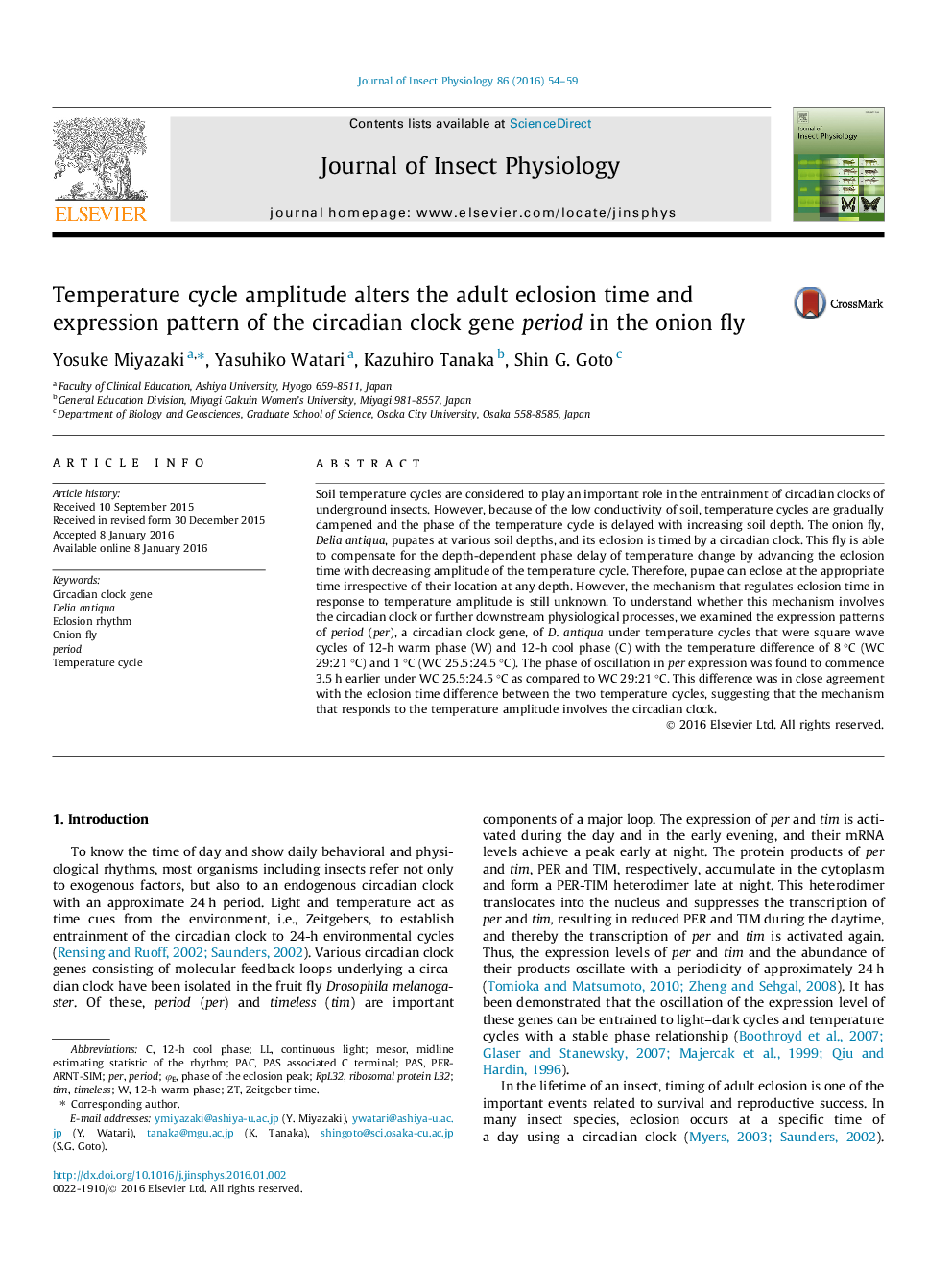| کد مقاله | کد نشریه | سال انتشار | مقاله انگلیسی | نسخه تمام متن |
|---|---|---|---|---|
| 2840307 | 1570984 | 2016 | 6 صفحه PDF | دانلود رایگان |
• In the onion fly a circadian eclosion rhythm is entrained by soil temperature cycles.
• This fly advances the eclosion time as the amplitude of temperature cycles decreases.
• The expression pattern of period gene was examined under a 8 °C or 1 °C amplitude.
• Its phase advanced under a 1 °C amplitude compared to under a 8 °C amplitude.
• The advance of eclosion likely results from a phase advance of the circadian clock.
Soil temperature cycles are considered to play an important role in the entrainment of circadian clocks of underground insects. However, because of the low conductivity of soil, temperature cycles are gradually dampened and the phase of the temperature cycle is delayed with increasing soil depth. The onion fly, Delia antiqua, pupates at various soil depths, and its eclosion is timed by a circadian clock. This fly is able to compensate for the depth-dependent phase delay of temperature change by advancing the eclosion time with decreasing amplitude of the temperature cycle. Therefore, pupae can eclose at the appropriate time irrespective of their location at any depth. However, the mechanism that regulates eclosion time in response to temperature amplitude is still unknown. To understand whether this mechanism involves the circadian clock or further downstream physiological processes, we examined the expression patterns of period (per), a circadian clock gene, of D. antiqua under temperature cycles that were square wave cycles of 12-h warm phase (W) and 12-h cool phase (C) with the temperature difference of 8 °C (WC 29:21 °C) and 1 °C (WC 25.5:24.5 °C). The phase of oscillation in per expression was found to commence 3.5 h earlier under WC 25.5:24.5 °C as compared to WC 29:21 °C. This difference was in close agreement with the eclosion time difference between the two temperature cycles, suggesting that the mechanism that responds to the temperature amplitude involves the circadian clock.
Figure optionsDownload as PowerPoint slide
Journal: Journal of Insect Physiology - Volume 86, March 2016, Pages 54–59
